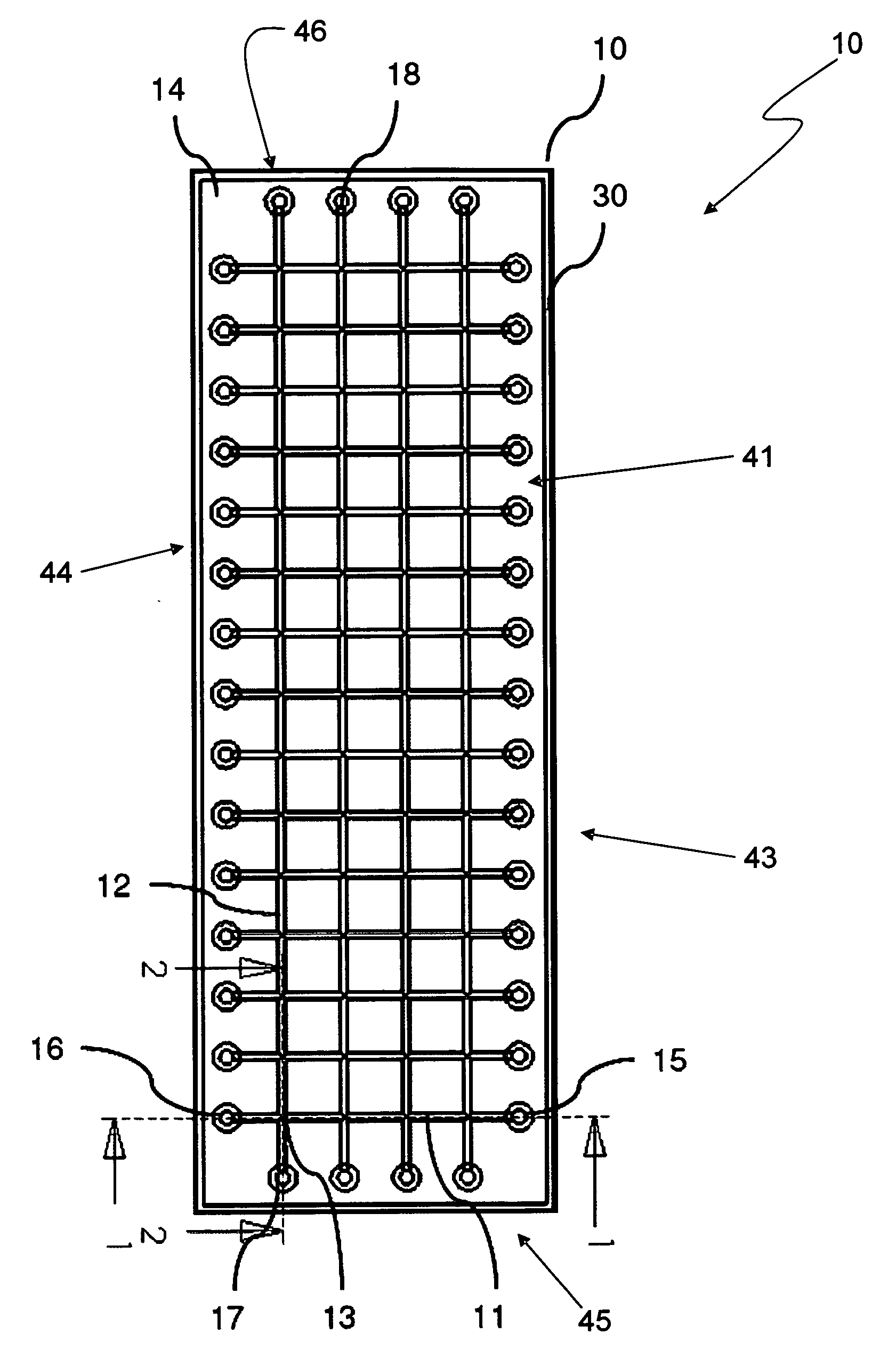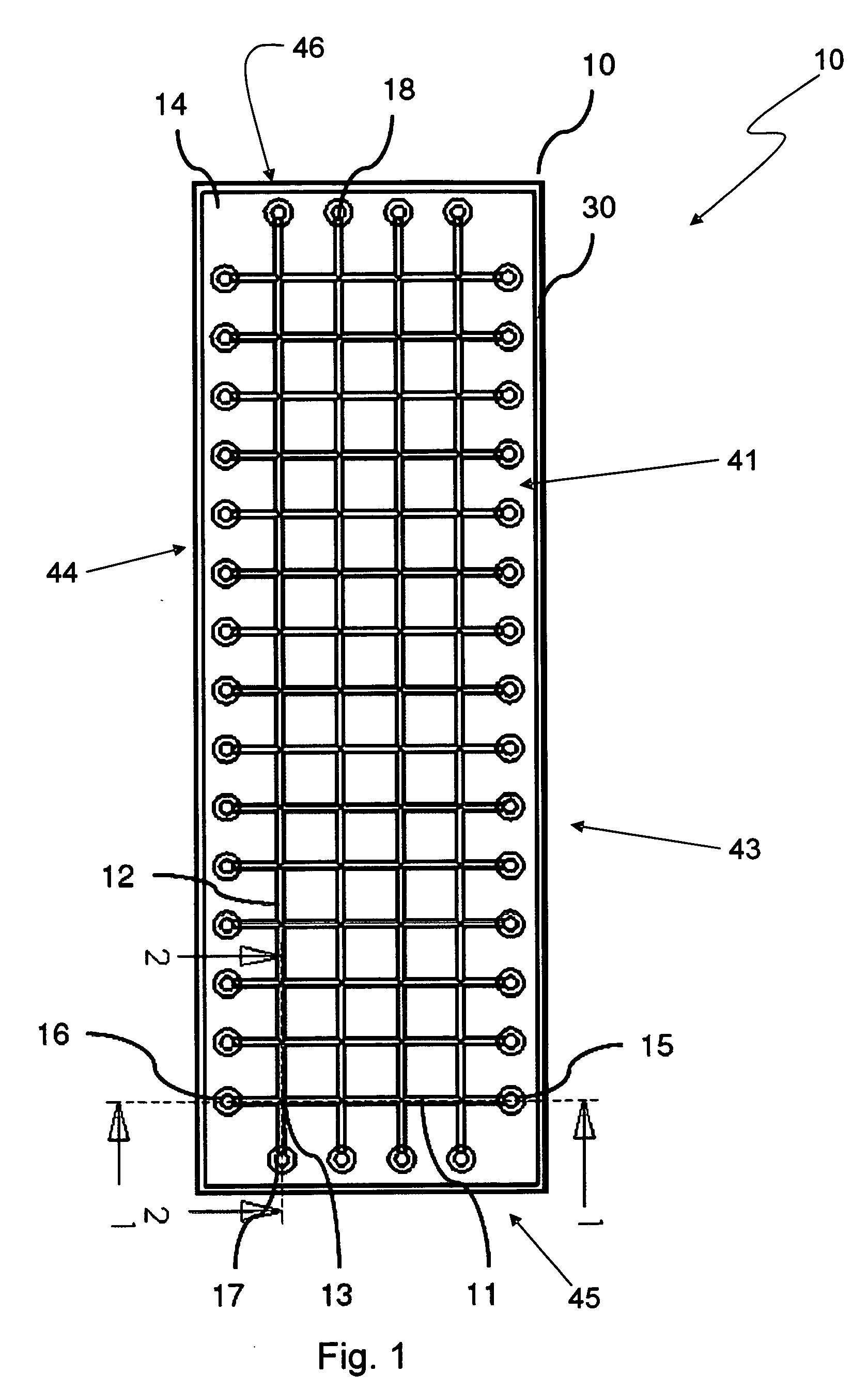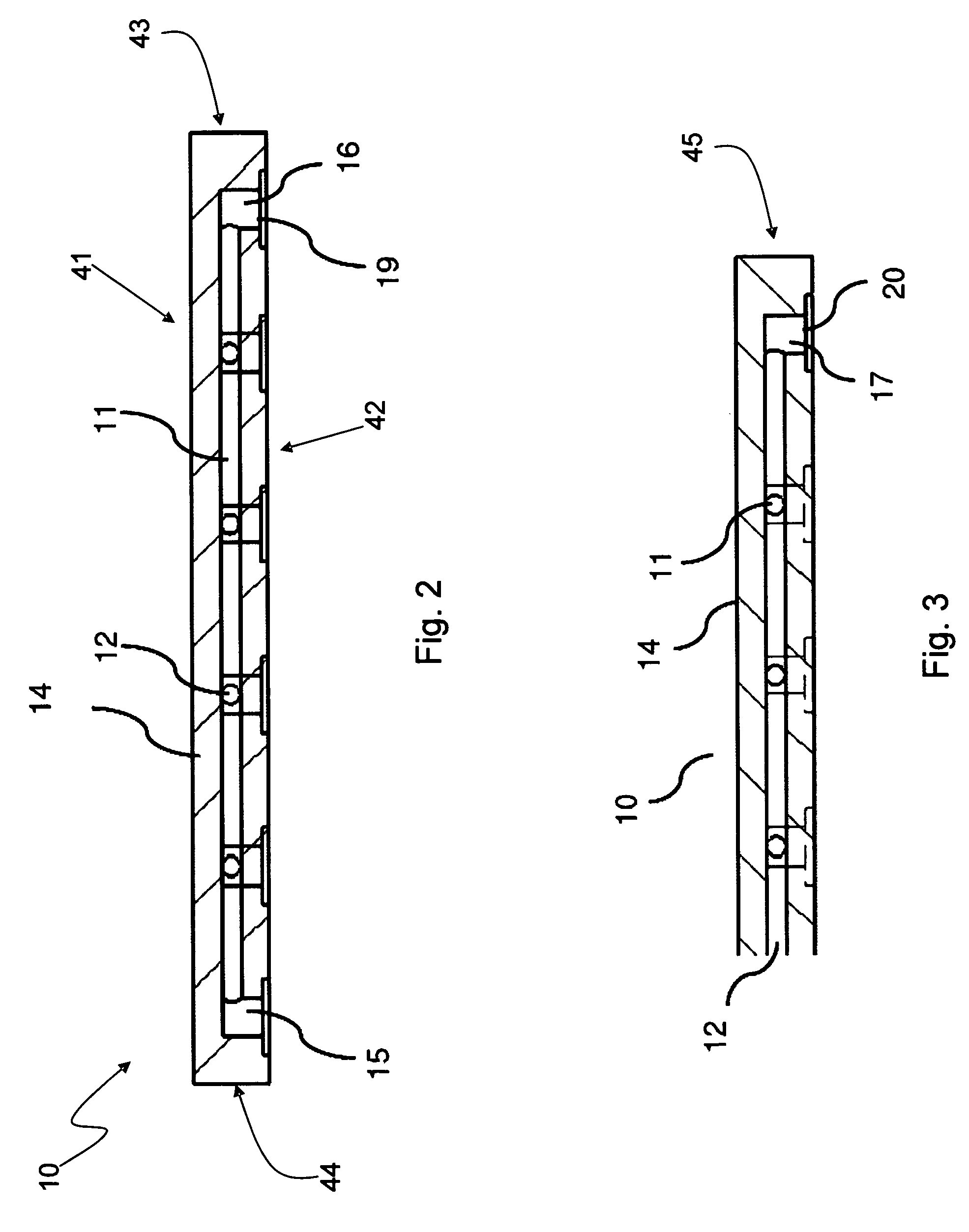Fluidic array devices and systems, and related methods of use and manufacturing
a technology of fluidic arrays and array platforms, applied in the direction of machines/engines, ceramic shaping cores, chemical/physical processes, etc., can solve the problems of affecting the quality of the array, the current process for manufacturing both array platforms, and the inability to meet the needs of the customer, so as to eliminate possible contamination, facilitate the immobilization of the probe and the configuration of the spot, and facilitate the effect of configuration
- Summary
- Abstract
- Description
- Claims
- Application Information
AI Technical Summary
Benefits of technology
Problems solved by technology
Method used
Image
Examples
example embodiments
[0074]Various embodiments provide fluidic array devices, which may be used for chemical and biochemical analysis. FIG. 1 shows a top view of an embodiment fluidic array device 10 with a 4 15 array of intersection spots 13. FIG. 2 shows a sectional view of the array device 10 along a plan 1 indicated in FIG. 1. FIG. 3 shows another sectional view along a plan 2 indicated in FIG. 1.
[0075]The fluidic array device 10 includes a body 14. Inside the body 14 are four column fluidic channels 12 with fluidic interfaces 17 and 18, and fifteen row fluidic channels 11 with fluidic interfaces 15 and 16, which together form the 4 by 15 array of intersection spots 13 by respective intersections of column fluidic channels 12 with row fluidic channels 11. The body 14 of the device 10 may be made of an elastomeric material by any suitable molding process, such as by a molding process disclosed in U.S. Pat. No. 7,125,510 to Zhili Huang, entitled “Microstructure Fabrication and Microsystem Integration,...
modification example
SURFACE NANOENGINEERING MODIFICATION EXAMPLE
[0106]Nanofabrication opens a new window for microfluidics. FIG. 15 shows a perspective view of one intersection spot 520 at an intersection of two channels in another embodiment fluidic array device 500. FIG. 16 is a sectional view of the device 500 shown in FIG. 15. The device 500 includes a body 502, which may be similar to the elastomeric bodies described above. Inside the body 502, a fluidic channel 504 and a fluidic channel 506 intersect to form the intersection spot 520. The fluidic channels 504, 506 may be, for example, rectangular with an aspect ratio from 1:5 to 1:1000. The respective top surfaces 508 and 516 and bottom surfaces 510 and 518 of the fluidic channel 504 and 506 can be nanoengineered to obtain certain surface wetting properties, while the top surface 512 and the bottom surface 514 at the intersection spot 520 can be nanoengineered to another surface wetting property. The fluidic channels 504 and 506 can be closed at ...
PUM
| Property | Measurement | Unit |
|---|---|---|
| Thickness | aaaaa | aaaaa |
| Elastomeric | aaaaa | aaaaa |
| Structure | aaaaa | aaaaa |
Abstract
Description
Claims
Application Information
 Login to View More
Login to View More - R&D
- Intellectual Property
- Life Sciences
- Materials
- Tech Scout
- Unparalleled Data Quality
- Higher Quality Content
- 60% Fewer Hallucinations
Browse by: Latest US Patents, China's latest patents, Technical Efficacy Thesaurus, Application Domain, Technology Topic, Popular Technical Reports.
© 2025 PatSnap. All rights reserved.Legal|Privacy policy|Modern Slavery Act Transparency Statement|Sitemap|About US| Contact US: help@patsnap.com



